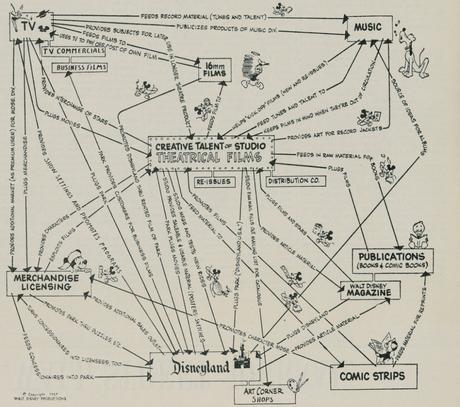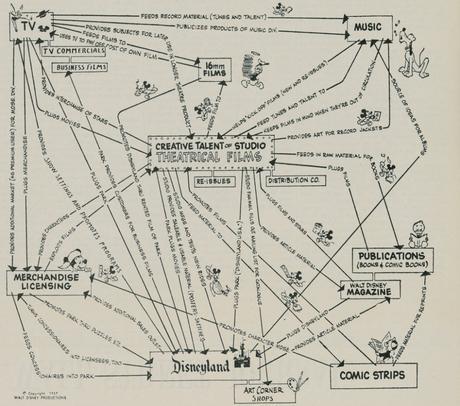

Your company’s strategy is not important in the same way your brain or your heart are not important.
They are more than important. They are essential. You need them to survive. Without them…you’re dead.
A company’s strategy is more than “important.” A company IS its strategy.
If you are skeptical of this claim or flat-out don’t agree (good!), consider the following things about a strategy:
[1] It is the only thing that can guide decision making at all levels, from CEO to line worker. [2] It is very durable…it lasts a long time. It’s the one stabilizing force, the beacon, in the face of constant, unrelenting, inevitable change. [3] It defines success — the company’s reason for existing — and tracks (or at least can track) if that success is being achieved.
It’s more than these 3 things, but I think that backs up my claim.
Also consider: Companies with well-defined, well-communicated strategies do better than those that don’t have them or communicate them. You don’t need to research a bunch of scholarly articles to convince yourself this is true. Proof of this surrounds us — the companies whose products we depend upon, the companies that dominate stock market, the companies that inform and entertain and define our experiences, every day.
Apple. Google. Tesla. Amazon. Corning. Samsung. Proctor and Gamble. Starbucks. Sam Adams. Hubspot. Chipotle. These companies have clear strategies. Their communication is deliberate. Their execution is relentless.
Do you know what your company’s strategy is? Does your company have one?
…do YOU have one?
====================
Disney has a strategy. They had one in the 50s, before the “field of study” was nearly as developed or rigorous as it is today. Here’s a link to the Disney strategy map from 1957 (thank you HBR for hosting it).
Print it out on a big piece of paper. Study it for 5 minutes before you read any more...just look at it, and absorb whatever you can. Try not to judge or form opinions about it. Instead, just try to understand it…to understand the different parts, and the interactions between them, how a change in one area would impact the others. (Please do this. I will wait)
We know this strategy worked (and some version of it continues to work). But let’s pretend we don’t know that. Let’s pretend we’re on the board of Disney, and the CEO (Walt) comes to us with this brilliant…dare I say…”infographic”…in the spring of 1957.
What weaknesses can you find? How can we make it stronger…right now, one year from now, five years from now, fifty? How do we implement it? Manage it? Evolve it?
It’s pretty important to ask these questions. The future of the company — everyone’s jobs, the customers that depend on the products, the ecosystem of value we create — it all depends on the strategy. We should think about it and try our best to get it right.
Below are some questions (and follow up questions) I’d ask. I organized the questions in to 4 categories:
- Logistics (how does the strategy work?),
- Weaknesses (why might the strategy not work?),
- Opportunities (how might the strategy work better?),
- Refinements (how can the strategy improved to drive decision making?)
(If you skipped studying the graphic before, you really need to do that now before reading on.)
=====================
Logistics
- What is the best way to organize people to support this strategy? (For example, one “LOB” manager per box, reporting into a central COO) How does our current organization compare to the optimal one? Do we have a plan to get from current org to the optimal one?
- Are all of the arrows “activated” right now? Do we have the infrastructure to support every arrow on this map today? in 1 year? 5 years?
Weaknesses
- Disneyland is a big consumer of value from the other boxes. Does it generate the revenue to justify it’s massive consumption? How can it PROVIDE more value to the other boxes?
- The 16mm film box has very few connections. Can it be eliminated? What’s the impact to the business if we do?
- The “Theatrical Films” box is a central hub of value. If it doesn’t work well, it could be a single point of failure for the entire strategy. What’s the likelihood of it failing? Can we reduce that likelihood? How? If we can’t…how can we distribute / transfer that risk across the other boxes?
- Are any arrows under threat from competitors today? Will they be in 1 year? 5 years? Which arrows are at highest risk from competitors? How can we protect them? (this brings up a point, who are Disney’s competitors? Warner Brothers?)
- Are any of these arrows in conflict with one another? Conflict = simultaneously contributing to and diminishing the same objective. For example, do some arrows drive revenue and content to TV that would have better impact in films (TV and films competing for the same content)?
Opportunities
- All of these arrows are not equal if you start to measure them: Capital Expense, Operational Expense, Revenue Generated, Lifetime Value. What’s the “operating cost” or “margin” of each one of these arrows? Which ones should we sacrifice to enhance the performance of the others?
- All the connections are internal to the Disney environment. How can we capture external value? How can we provide external value? For example, how can we connect the places and activities where kids and their parents often are…restaurants, community centers, playgrounds, schools, etc…to this value map?
Refinements
- Some arrows are not shown…is it because they don’t exist? For example — can TV provide material for books directly? Do we expect that it will in the future?
- What new boxes do we think will be on the map in 1 year? 5 years?
- What boxes will be irrelevant in 1 year? 5 years?
Whew, ok. I have a headache.
=============================
What’s the value of a map like this? So What?
Probably, your gut says this map is (very, very) powerful. You’re right if you think that (in my opinion). Here are three ways it’s powerful. There are probably ten more. (or a hundred. what are they?)
First: It communicates the major components of a strategy AND how they interact on a single page. It defines and communicates in one simple package. That drives focused analysis and useful conversation.
Consider my analysis above: at least some of those questions would generate useful conversation (at least one of them, I hope). I was able to develop my analysis with essentially zero knowledge about Disney’s business. This brilliant graphic allows a non-employee (of marginal intelligence) like me to understand, process, ask questions, extract value, strengthen, solidify, refine.
Of course, the strategy map is useful for the board / leadership / decision makers. But its power goes far beyond that.
Second: It’s a tool that anyone in the company can use to instantly understand how their position contributes to the overall strategy and mission of the company. Think about the massive raft of problems this single fact eliminates. A janitor working at Disneyland understands that if the bathrooms are clean, it directly impacts the huge number of “arrows” that connect Disneyland to the rest of the business. The same for someone inking comic strips, and a legal clerk in the licensing department, and, and, and…
How does what I do impact the company? Here’s how. Look at this map. Here’s where you are. Here’s how what you does impacts what we all achieve. Amazing.
Third: It also helps people (employees, shareholders, investors, advisers) understand the direction and intent of the company. A map like this will clarify decision making and prioritization (NOTE: look out for a future article on prioritization). It can even drive people within the company to develop specific career paths that reinforce the strategy (If I were working on 16mm films, I’d try and make the jump to theatrical films ASAP).
Let me underline this point: you don’t have to scream strategy from a mountaintop. The people responsible for executing it do it for you. Wouldn’t that be nice?
I’m sure there’s a fourth and a fifth and a sixth.
Here’s the thing: having a strategy is more than a “good idea.” Strategy is an essential component — maybe THE central component — of any company that aspires to dominate a market, serve its customers, and eliminate competition.
A company IS its strategy.
I can’t think of any other thing to succinctly capture, communicate, and execute a common purpose across a complex, geographically distributed organization.
Can you?
===============================
SOME EXERCISES THAT WILL MAKE YOU SMARTER (maybe)
Below. I’ve set up a few ways you can build on this Disney strategy map and add value to your own professional world. This may look like homework. But I’m not going to call this homework because it should be fun. Let’s call it homefun.
Homefun Exercise 1] Draw the strategy map for your company / department / function / business unit / your own job. Or maybe you have a side business…draw a strategy map for that. Your company may already have a strategy map like this, or not. There’s lots of literature on strategy maps. Some of it’s very good. But my personal experience is it’s best to read those things after you’ve mapped out your own universe of insanity.
It doesn’t have to look like a work of art. You’re not a Disney artist. Book an hour in your calendar. Draw a map, get as far as you can. Use an actual pencil and paper (or a whiteboard). Invite 1 or 2 brains into the room to review it with you. I guarantee it will be a useful and interesting conversation.
(Note to self: Map my personal strategy and present it in a future article)
Homefun Exercise 2] Update this Disney strategy map. What’s missing from this map? Well, DISNEY WORLD for one thing. How about Pixar, ever heard of them? How about the entire Star Wars franchise? Probably 10 more things too.
Draw in a few of these missing boxes, and connect them up to the existing boxes. Are there new arrows? Do some other arrows go away?
Now do the analysis. Do the new boxes address some of the weaknesses and opportunities in my analysis? I bet they do. Do they raise new weaknesses and opportunities? Yes, I’m sure.
Homefun Exercise 3] Simplify this strategy map. What happens if you eliminate a box? Can you assess the impact? If you can’t…who do you think you’d need to talk to, to get that understanding? Now look at the strategy map you made in exercise 1. What can you eliminate from your company / department / function / personal strategy? Can you assess the impact? If you can’t…who do you need to talk to in order to get that understanding?
~~~~~~~~~~~~~~~~~~~~~~~~~~~~~
- Read Next: Standardization Is Not An Objective –>
